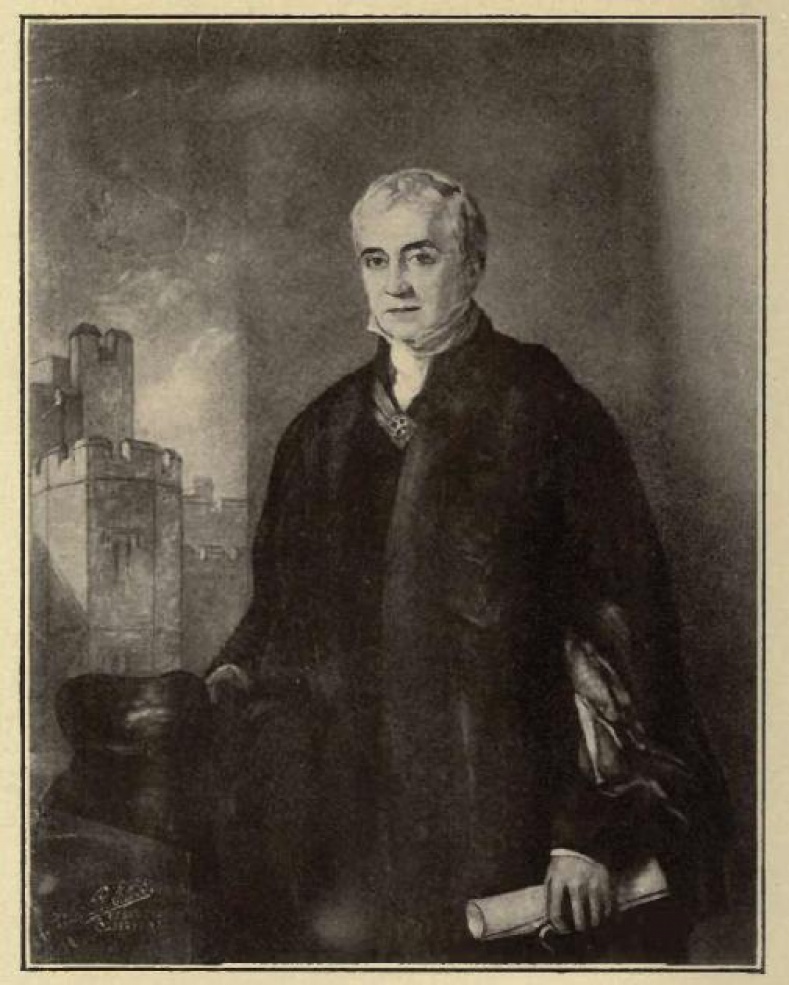
Thorp, Charles
1783 -1862
Archdeacon of Durham and Warden of Durham University
Charles Thorp was the Rector of the parish of Ryton near Gateshead and later Archdeacon of Durham. He became the first warden of the University of Durham after its foundation in 1832. Charles was born into a clerical family, his father Robert Thorp (1736 – 1812) serving as Archdeacon of Northumberland. Charles was educated at Newcastle Royal Grammar School, before attending Peterhouse, Cambridge and University College, Oxford. He graduated with a BA in 1803 and an MA in 1806. He then became a tutor at Oxford before becoming a priest in 1807. In 1811 he returned home to become Rector of Ryton, a role his father had undertaken many years earlier. He subsequently became Canon at Durham in 1829, before becoming Archdeacon of Durham in 1831. He was the first Master of University College, Durham and Warden of the University of Durham from the post's establishment in 1833 until his death. In many ways, the foundation of the University, originally conceived as a place of learning for future priests, can be credited to Thorp. He was the driving force behind Bishop William Van Mildert’s (1765 – 1836) scheme judiciously to transfer existing endowed resources to support the new institution during its formative years.
Thorp regarded education as necessary for everyone, no matter what their place in society, as a means of improving lives and livelihoods. He was an anti-slavery campaigner and in 1827, under the auspices of the Church Missionary Society, he helped establish Fourah Bay College in Freetown, Sierra Leone, the oldest university in West Africa. Towards the end of his life in 1861, he helped establish a free school in Ryton that continues to bear his name, the Thorp Academy. Much earlier, in 1815, his zeal for improvement led him to establish a savings bank in Ryton to encourage the less well-off sections of society to accumulate resources that could be drawn on in times of need. In the 1840s Thorp acquired the tenancy of the Farne Islands, where he restored the tower on Inner Farne which was called ‘Prior Castell's Tower’ after the name of the monk that originally built it. He employed a wildlife warden to protect threatened bird species. The idea that conservation was important was decades ahead of its time. He personally bought the islands in 1861, a year before his death. His family donated the islands to the nation by gifting them to the National Trust in 1925.
References
Durham Castle Society. (2018). College History - The Venerable Charles Thorp, Available here (Accessed 13/06/2018).
Holy Cross Church Ryton. (2018). Charles Thorp - and the Comprehensive School, Available here (Accessed 13/06/2018).
Keys to the Past. (2018). Monastic settlement on Farne Island (North Sunderland and Seahouses). [Online] Available here (Accessed 13/06/2018).
The Northumberland Gazette. (2003). Alnwick's oldest solicitor dies, Available here (Accessed 13/06/2018).
Whiting, C.E. (1932). The History of Durham University, 1832-1932. London: The Sheldon Press.
Whiting, C.E. (1940). Nathaniel Lord Crewe Bishop of Durham, 1674-1721, and his Diocese. London: Macmillan Company.
Wikipedia. (2018). Charles Thorp, Available here (Accessed 13/06/2018).